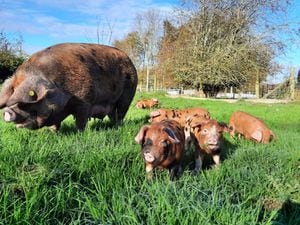Balanced diet for cows will pay dividends
Great spring conditions are providing a lifeline for dairy producers following forage shortages.

However, don't overlook the important role of buffer rations to support cow performance at turnout.
Despite AHDB reporting the quality of grass is already ahead on last year, averaging 12.3 MJ/kg DM ME, 19.5 per cent dry matter and 26.2 per cent crude protein, grass alone cannot support dairy cow requirements.
During the grazing period, daily intakes of grazed grass vary by around 8kg dry matter, with day length, grass availability and grass quality all contributing to what intakes can be achieved.
In early spring, cows only eat around 6kg DM of fresh grass. However, in comparison, during the early summer months when day length, grass quality and grass availability are high it's possible to reach intakes of 14kg DM of grass.
A balanced ration at turnout is therefore essential for cow health and production, especially for fresh calvers and high yielders who can't meet requirements for maintenance plus milk from grass alone.
Buffer ration needs to be formulated to support the low structural fibre and high fermentable sugar content of fresh spring grass, while complementing its high protein content. And, with premium milk contract prices on offer for achieving high butterfat levels, producers need to ensure diets also support milk fat levels.
The key to maintaining butterfat production is to boost the fermentation of fibre in the rumen, and subsequently increase the supply milk fat precursors. As a result, it's important to make sure that rations contain sufficient digestible fibre, aiming for an neutral detergent fibre content of 34 to 38 per cent.
For this to be effective, the rumen environment also needs to be optimised for fibre digestion. Avoid supplying too much rapidly available starch, which can trigger sub-acute rumen acidosis, and limit in-parlour feeding to 6kg per cow per day for the same reason.
Inclusion of at least 0.5kg per cow per day of chopped straw will help promote rumination and good rumen function.
In addition, spring grass can have a fatty acid content of up to six per cent and can be particularly high in polyunsaturated fatty acids. If levels of PUFAs are too high in the rumen, this could result in the production of a specific fatty acid that switches off milk fat synthesis in the udder, which could be exacerbated by low rumen pH.
A cost-effective way to support milk fat production is to incorporate a rumen protected fat in buffer rations.
Charlotte Ward, ruminant nutritionist at Trident Feeds





